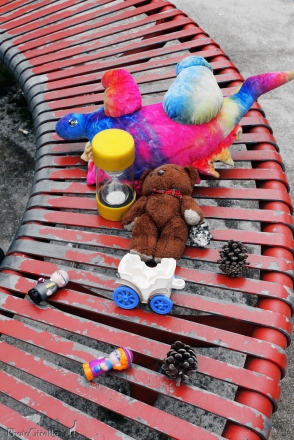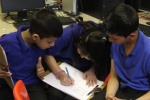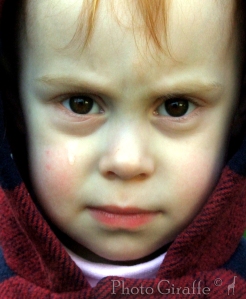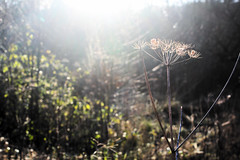A Photography Project aimed to develop the Emotional Literacy of vulnerable school children.

Work Hard – Play Hard
Working with:
Group A – Year 2 (6-7 year olds)
Morning session 2.5 hrs
Group B – Year 3 (7-8 year olds)
Afternoon session 2.5 hrs
1. Project Review: To organize the material of all the previous sessions into an inter-connected whole. To fix ideas learned in the mind through repetition. To recall old ideas with new connections.
2. Story Boarding: For the groups to review all their edited photographs and derive meaning from each picture, paying particular attention to feelings.
3. Brain Storming a Cohesive Narrative: To create one cohesive narrative per group using the best photographs they took over the course of three sessions.
Week four: Using Photography to Storyboard
As discussed in the previous article (Aliens Have Feelings Too! (Part Three)), when working with the two groups to develop a narrative, I soon found that they needed to be helped greatly if they were to achieve this and therefore I decided that we would create one story per group working with the photographs that they had already taken, dedicating these efforts to team work rather than having ten short stories in one book.
Here follows a brief description of the processes taken to complete the final book which has now been produced for Priory Lower School Bedford. It consists of two stories one from each group and I have also made a audio visual story to accompany hardback book, so that each child can have a copy of their work within budget.

Working Hard – Playing Hard
1. Project Review:
a.) Vocabulary: From week one session reviewing six primary emotions and 5 different synonyms for each. This is not a drilling lesson for repetition, but rather to see how the children have evolved. When they recall vocabulary, I ask them if they can put that word in a little story (scenario). In this way you can assess how they the students have progressed with what they have learned as apposed to just simply remembering what was taught.
b.) Role-Play: This time I filmed it for them so that they could watch themselves back and see how they had improved. The children from year 3 showed an increase of improvement than year 2, who showed little signs of having improved their role play skills. I assessed this through their coordination and how they reacted to the lines and ques of their ‘co-stars’. The children in year three showed such a dramatic improvement in their performance, keeping in time, ques for coming in, off ‘stage’, I was actually shocked. What was even more surprising was the children reaction to watching themselves on video. Year 3’s were very amused, but yet very critical of their own performance. A few of them even commented that they “sucked” which in truth compared to other children of their age they probably did, but I was just amazed and very proud at how far they had come. Because the purpose of a drama activity is not just to rouse children imaginations, but also to gain focus on a task and learn to work together as a team. Drama needs constant discipline and attention if the overall production is to be of a higher standard. If I did something different I would have filmed them practicing on every session so that they could see how they had improved and why – which could be attributed to their concentration. I realize now what an important skill this is for vulnerable children to learn. These things need to be spelled out for children so that they can see the benefits in each and every activity. Play is fun but it should teach you something too.
2. Story Boarding:
This activity was not conducted in the conventional way story boarding is known to be carried out, (i,e with the story coming before the pictures). We had the pictures first, but we did the story until the end. Needless to say, this activity fulfilled the criterion for most story board session, giving the children visuals to think and plan, as a group of people brainstorming their ideas together. Placing their ideas on a board and then arranging the storyboard on the wall. This fosters more ideas and generates consensus inside the group.
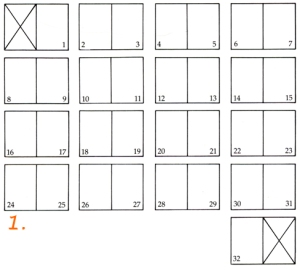
Conventional Story Board Layout.
a.) Objectives:
* There are 20 pictures on the board. We need to make a story using the photographs we took to create a book for Priory Lower School. We don’t have to use all the pictures, we only need enough to make one story. All the pictures have numbers from 1-20, but this does not mean the story has to be in this order, we can jumble up all the numbers and I will give them new numbers so I know what happens at the beginning, the middle the end for when I make our book.
* Concept check: How many pictures do we have? How many stories are we going to make?
b.) Rules:
* We are as working as a team and there is no ‘I’ in ‘We’. So what ‘we’ need to remember is, that these are our photographs and this will be our story, which we will give as a gift to our school. (To encourage team spirit.)
* Nobody can touch the board except the person who writes on it (in this case me – because they will all want to touch the board).
c.) Generating ideas:
This activity requires a great deal of thought from the children. If the children are silent for 5 minutes, then you know you’re on to a winner! The aim is to encourage that thought process. When doing this the children actually told me that they ‘We’re quiet because they we’re thinking’, I was well chuffed because they had problems generally focusing on most activities – so I knew that this meant that they had made progress.
* Look at the photographs and think of some words we can use to describe what’s happening in each picture. Don’t worry if you can’t think of something to say straight away, you can take your time, think carefully and then when you want to speak put your hand up.
* Write down the words the children give to describe each pictures underneath each picture. I deliberately edited the photographs making some brighter, darker etc to create a stronger mood for each picture to help them imagine.
3. Brainstorming
The Next step was brainstorming the ideas which the children were already familiar with from week 3. With all the pictures laid out the Mind Map Tree for Brain Storming is in a place where everyone can see, I asked the children to think about:
* Your favorite story? (Students example, Goldie Locks and the Three Bears.)
*How many people are there in the story?
* Are they all people or are some animals ?
* What we call the different creatures in one story? (characters)
* How many characters does this story have? (Use the pictures to count. We used other toy props and in some photographs there were more than one alien in some pictures).
* I list the number of characters they see, then ask the children to give them all names. I write all the ideas down. No one idea is better than another. I write everything down to encourage them all to give me more ideas.
* Then we vote on the best ideas. If you have a tie you can throw your tuppence in there, or better yet, flip a coin.
* Start with, what happens first. As the story unravels take down each picture from the board and place it on the storyboard, giving each picture a caption.
Practitioners Process:
Thereafter I took the pictures from the storyboard with the captions and the mind map and wrote a story with their ideas. I produced a hard back book for the school and an audio visual story for the children to take home and play on their computer or dvd players as the children expressed there disappointment at not receiving a book to take home. Unfortunately the budget would not stretch that far, so I decided to make a video for them to take home.
Here is the audio visual book of the story we created:
Conclusion:
During the final stages of production, Year 2 found it harder to create cohesion with there ideas for their final story. On the other hand, Year 3’s story was remarkable imaginative and detailed. They did not struggle with the concept of chronology and therefore writing up their ideas into a narrative was far less challenging than writing up the narrative for year 2; whilst the ideas year 2 produced were more fragmented and more challenging for me to make sense of when producing the final story, I noticed that year 2 were more clear about how the Alien was feeling in each picture and were using more of the vocabulary previously taught and with more confidence, which to me indicated an improvement in their emotional literacy.
Both groups focus of attention had improved, for when it came to creating the story, they were quieter and more thoughtful during the storyboard activity, assuring me that they were quieter because they were ‘thinking’. This compared to when they had started was remarkable, as I had found it very challenging to get them to focus on most of the activities in the beginning of the project. They had become more comfortable with the idea of using their imagination and could talk about how they were using it with much more fluency than when we had began.
From assessing their performance in the workshops by the end of the course, I can confidently say that their ability to talk about feelings had improved, as well as their ability to focus on activities using the imagination, which I link back to Emotional Literacy. For if children are encouraged to talk about things that they cannot physically use their 5 senses for, then they will be more able to express and share notions related to their internal world.
It was only when I completed the storybook that I realized that they had improved so much in terms of being able to access and express their internal world, for the stories they created with me. Their teachers also commented on an improvement in the children’s self-esteem and enthusiasm to participate in class. Furthermore, I was delighted that they had told their teachers that they had enjoyed the sessions very much and wished that I could come back to work with them again.
Other Useful Links:
http://www.ehow.co.uk/how_7921634_do-storyboard-childrens-books.html










